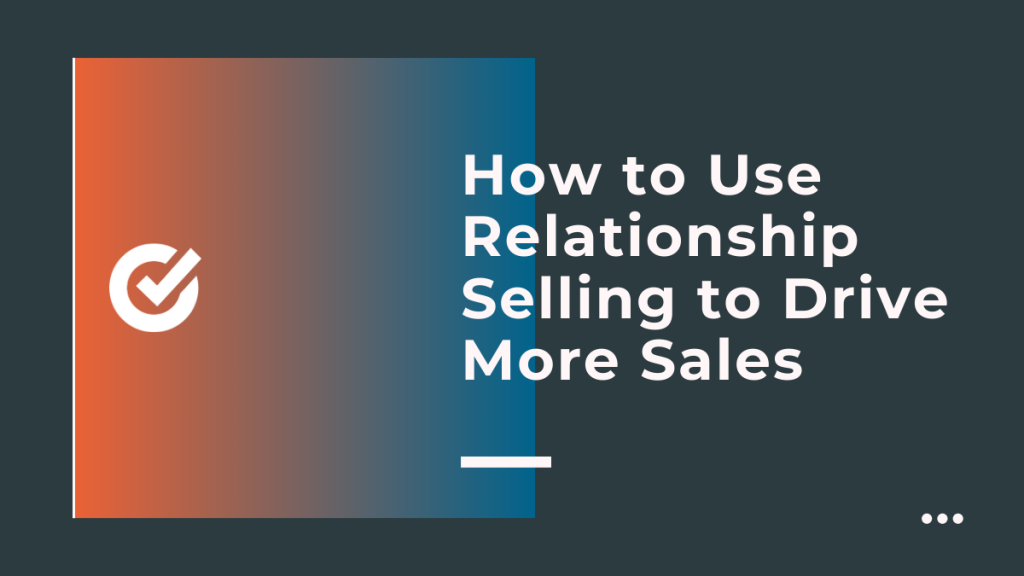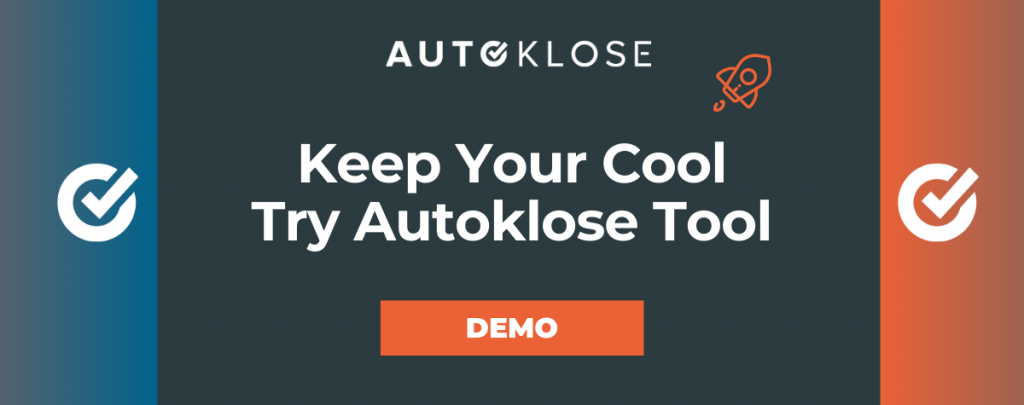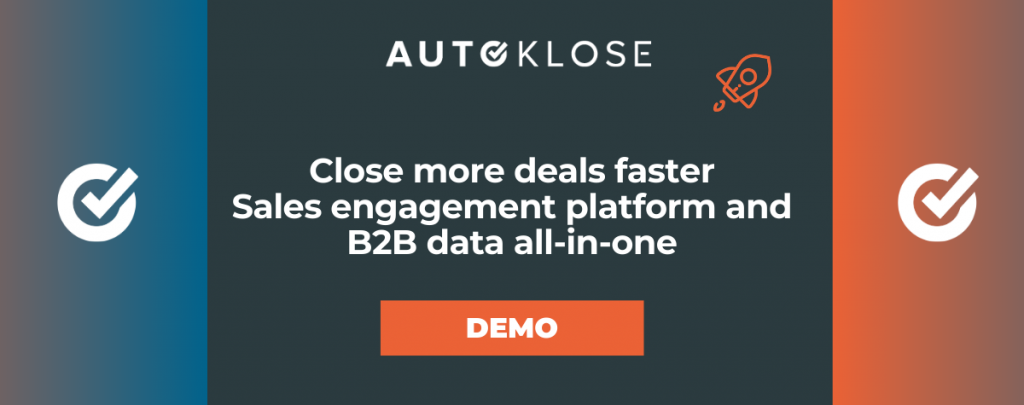
Building meaningful relationships with your prospects is at the core of selling.
There are other important aspects, such as features, value, or pricing, but they’re not the top priority in this approach.
There are many different sales techniques and you can pick the one that fits particular phases of your customer journey or product/service line best.
In other words, different industries, price ranges, or funnel stages can significantly benefit from using the right sales approach that matches their requirements and characteristics.
The importance of relationship selling becomes even more evident in competitive B2B markets where customer loyalty is somewhat of a holy grail.
Let’s see how relationship selling can help you drive more sales and boost your retention rate.
What Is Relationship Selling?
Relationship selling is a sales technique that focuses on and prioritizes building profound and meaningful relationships with prospects in order to close a deal.
Special attention is paid to establishing trust with potential customers, which means that salespeople have to spend a great deal of time communicating and interacting with them before bringing up the idea of selling their solution.
So, instead of highlighting and dwelling on the pricing or features, salespeople use building relationships as their main weapon.
Why is relationship selling so powerful?
Its effectiveness lies in adding value and being committed to your prospects. It’s these two factors that make relationship selling perfect for products and services with a high average selling price – customers know that they can rely on you to sort out any potential issue they might have even after the purchase.
Given that the B2B industry usually has a longer sales cycle due to the fact that products and services are more complex and expensive, relationship selling should be your No. 1 approach.
You can’t expect someone to make up their mind and purchase customizable software with a hefty price tag as they do with some less expensive items.
Relationship Selling vs. Transactional Selling
Transactional selling is on the opposite side of the sales spectrum – it’s a sales approach used for selling low-cost products as in such cases, there’s no point for a salesperson to invest their time and energy into getting to know every individual customer in detail.
We’re talking about quick and un-personalized sales of commoditized items. The thing is that people don’t need too much time to decide whether they’re ready to spend money on such products.
On the other hand, relationship sales is much more intensive in terms of research and effort on both ends – sales reps and prospects have to spend a lot of time and energy trying to showcase the product and learn as much as possible about it, respectively.
That’s why this approach is also known as consultative selling – sales reps are focused on prospects, their needs, pain points, and requirements.
Relationship selling might take weeks or even months – but it’s very much worth it.
Finally, it’s worth mentioning that by using this technique, you’ll be able to secure long-term customers, instead of just a one-time sale.

Relationship Selling Tactics
There are different relationship tactics that you can use to woo and wow your prospects and nurture them into pulling their credit card out.
Here are a couple of tips that will help you with your relationship selling skills and build loyalty with your prospects.
1. Establish Common Ground
As relationship selling is based on learning as much as possible about your prospects and understanding their point of view, research plays a crucial role as the first step of this approach.
Browse through their social media and website and ask them a lot of questions as that will allow you to establish some common ground with them.
Look for any common denominators and similarities between the two of you, and make use of this information.
Do both of you enjoy jazz or classical music? Mention a concert that you’ve been to and ask them whether they were in attendance too.
Is there any mutual connection whose name you can drop?
What about their hobbies? You can use these as a conversation starter.
Or you can even refer to the place they live – ask something about their city, for example, to recommend a popular restaurant or nearby landmark.
Don’t be afraid to get personal and share something about yourself if you know that they’d be interested in talking about it.
Treat this relationship as any other that you’d like to build and cherish. It’s essential to be sincere and genuine, and leave your usual salesperson personality in the background.
Don’t think about how to sell – think about how to get to know your prospect better.
2. Provide Personalized Guidance Aligned With Their Specific Business Goals
Utilize the insights gained about the buyer, in combination with your deep subject-matter knowledge, to present well-informed recommendations.
A powerful approach is to propose a strategy that not only addresses a fundamental pain point of theirs but also seamlessly aligns with the unique value proposition of your product.
Strengthen the credibility of your advice by substantiating it with compelling anecdotes from customers who encountered comparable challenges.
Illustrating real-world scenarios where your solution successfully resolved similar issues adds weight to your suggestions and reinforces your expertise.
This not only reassures the prospect about the viability of your recommendation but also builds confidence in your ability to cater to their specific needs.
3. Don’t Talk Too Much
Being an active listener is something that will help you both in your personal and professional life.
Letting your prospect take the stage and talk about themselves is a surefire way to win them over.
There’s no need to push your agenda and talk about your product or service at this point – you’ll have an opportunity to do it later when your prospect is ready to listen to your offer.
While you’re building a relationship with them, it’s crucial to show them that you’re interested in what they have to say and that you care.
Besides, this approach will allow you to better understand their situation.
4. Listen Actively
If you listen carefully, you won’t miss some important things that your prospect says, and you can use them later on to tailor your offer.
Sales reps who talk endlessly and never actually stop to listen and actually hear what their prospects are saying, give the entire profession a bad name.
Active listening is a skill that will allow you to read the room and notice some important details about your prospects and understand what they need from you and your company.
That’s the best way to figure out whether your solution is the right fit for their needs. And although this might sound counterintuitive, you don’t want prospects who can’t make the most of your product or service and who will be unhappy with the value you provide.
Besides this, active listening will leave a great impression on your prospects. It shows that you genuinely care about providing the best service and customer experience, which is one of the most critical factors when it comes to making a purchasing decision.
Remember how you feel when someone is talking your ear off without giving you a chance to say what you think. Don’t be that person!
5. Provide Value
To present yourself as a trusted consultant and somebody who can help them improve their life, reach out to your prospect with a helpful suggestion, links to relevant and useful resources, or do something that directly benefits them.
That can also be, for example, a valuable introduction to someone who could help them with a business challenge.
Or you can give them free tickets for a jazz/classical concert (check the establishing the common ground part.)
Even some small gestures count and will score you some brownie points with your prospects.
The trick is to present yourself as someone who’s willing to take time to help them and make their life easier – without trying to sell them something in exchange for all the efforts. So, make sure to go well beyond what you’re selling and shift your perspective to being genuinely helpful.
6. Discover a Mutual Path Through Objections
Numerous sales professionals approach negotiations with a zero-sum mindset, where one party’s gain is perceived as the other’s loss.
This approach corrodes trust and compels negotiation counterparts to adopt self-serving attitudes.
The solution? Embrace the notion that a victory for your prospect translates to a victory for you. Collaboratively, you’re striving to uncover the optimal outcome.
Effectively addressing the prospect’s objections involves proactive preparation of multiple concessions you’re ready to offer (such as enhanced implementation support, improved payment terms, the assurance of round-the-clock assistance, and more).
Anticipating and proposing these compromises demonstrates your alignment with the prospect’s interests, fostering a greater likelihood of them reciprocating with their concessions.
7. Establish Yourself as an Expert in Your Field
Your prospects will trust you more if you’re an established expert in your field. In other words, if you’re mainly working with people from, say, healthcare, keeping pace with the latest trends in that industry will show them that you know what you’re talking about.
Try not to come off as an ordinary sales rep who just wants to sell and nothing else. If you’re well-versed in your prospects’ sector, you’ll be able to craft your pitch so that it addresses their main pain points.
This doesn’t mean that you need a Ph.D. in healthcare, engineering, or whatever your target industry is, but knowing the latest developments and challenges will make you a great source of information for your prospects.
They will be aware that you took the time to learn and educate yourself so that you can help them with the best advice and solution.
Over to you
Stop settling, start building relationships! This approach is at the core of relationship selling, so focus on your customers first and don’t rush things.
Sometimes the sale itself won’t happen immediately, but if you persistently build a relationship with a prospect that has the potential to become your customer, it’s worth investing your time and energy into the entire process.

 The Autoklose
The Autoklose 


Leave a Reply
You must be logged in to post a comment.